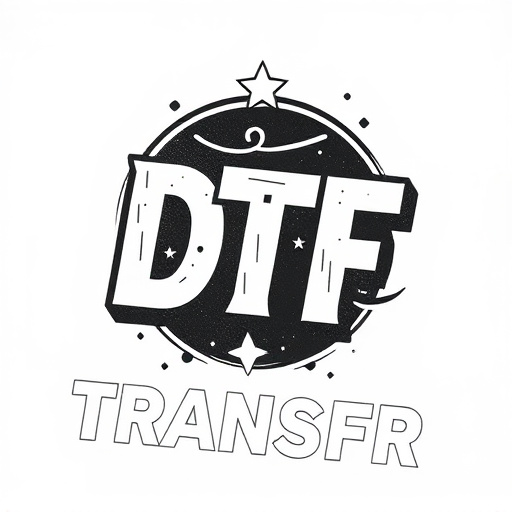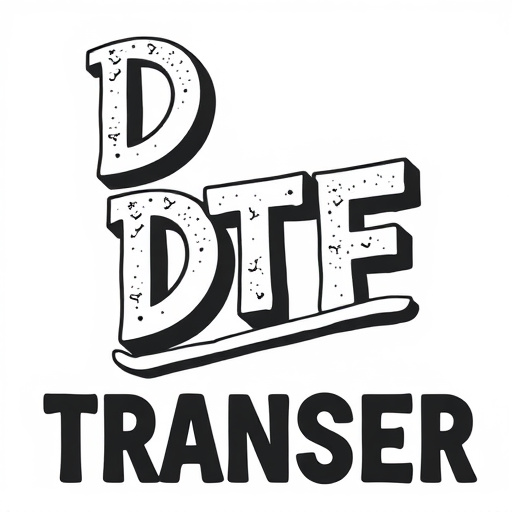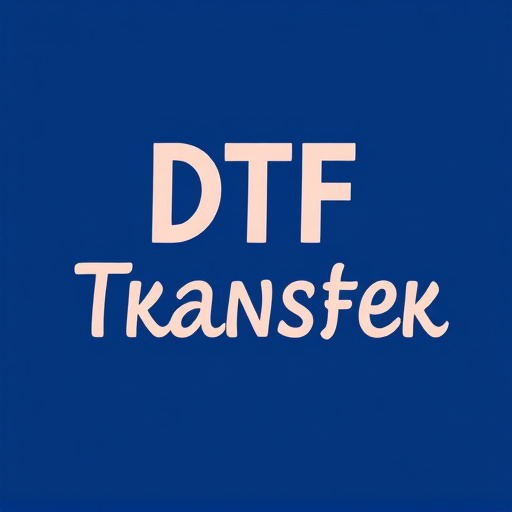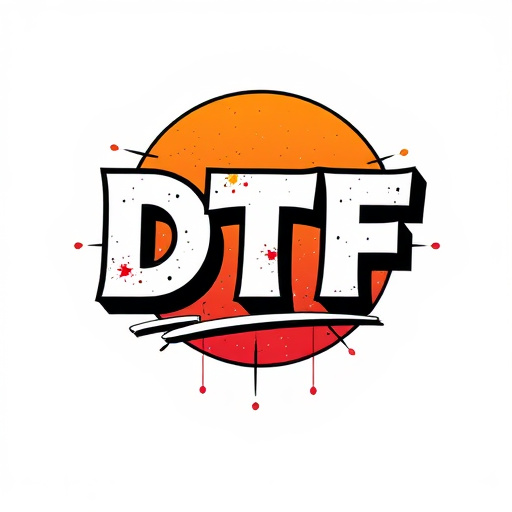DTF (Direct-To-Film) Transfers revolutionize printing by precisely reproducing thin lines and intricate details without traditional intermediates. This cutting-edge technology uses advanced lasers and engineering to deliver exceptional clarity, making it ideal for industries like circuit board printing, medical device marking, and artistic reproductions. DTF Transfers offer a direct, efficient path from digital design to physical print, ensuring aesthetic consistency across media. Key benefits include vibrant colors, superior durability, and accurate capture of intricate patterns, preserving original integrity. High-resolution scanners, specialized film, and thorough pre-press preparation ensure consistent results. DTF Transfers are transforming sectors with precise, creative innovation, enhancing efficiency, accuracy, and versatility in printing and product customization.
“Unleash the power of precise line reproduction with DTF Transfers—a game-changer in various industries. This article explores the art and science behind these innovative transfers, focusing on their ability to accurately replicate thin lines and intricate details. From understanding the fundamentals to choosing the right materials, we delve into the techniques that ensure optimal results. Discover real-world applications where DTF Transfers enhance productivity and quality, making them an indispensable tool in today’s precision-demanding landscape.”
- Understanding DTF Transfers: A Quick Overview
- The Importance of Precision in Line Reproduction
- Key Features of High-Quality DTF Transfers
- Choosing the Right Materials for Optimal Results
- Techniques to Ensure Accurate Detail Transfer
- Real-World Applications and Benefits of DTF Transfers
Understanding DTF Transfers: A Quick Overview

DTF (Direct-To-Film) Transfers are a cutting-edge technology revolutionizing the printing industry, particularly in the realm of accurately reproducing thin lines and intricate details. This innovative process eliminates traditional intermediates, allowing for direct imaging onto various materials, including film, fabric, and even metal. By using advanced lasers and precision engineering, DTF Transfers deliver exceptional clarity and fidelity, making them a game-changer for industries demanding high-quality, detailed prints.
The key advantage of DTF Transfers lies in their ability to capture and reproduce the finest line weights and smallest details with remarkable accuracy. This is particularly beneficial for applications such as circuit board printing, medical device marking, and artistic reproductions, where precision is paramount. Unlike traditional methods, DTF Transfers offer a more direct and efficient path from digital design to physical print, ensuring that every line and detail is rendered with exceptional consistency and clarity.
The Importance of Precision in Line Reproduction

In the realm of art and design, precision is paramount, especially when it comes to line reproduction. When creating or replicating intricate illustrations, patterns, or detailed drawings, the accuracy of lines becomes a defining factor of the final output. This is where DTF (Direct to Film) Transfers play a pivotal role. These advanced printing technologies ensure that every thin line and delicate detail is precisely reproduced, offering artists and designers an unparalleled level of control over their work’s visual integrity.
With DTF Transfers, the process involves directly exposing film to the desired image, resulting in crisp lines and a remarkable ability to capture intricate patterns. This method eliminates potential errors introduced by traditional printing techniques, ensuring that the original artist’s vision is accurately represented. Consequently, it becomes easier to maintain the aesthetic consistency of designs across various media, from high-quality prints to promotional materials, elevating the overall presentation and appeal of visual content.
Key Features of High-Quality DTF Transfers

When it comes to high-quality DTF (Direct to Film) transfers, several key features distinguish them from their lower-grade counterparts. One of the most critical aspects is the precision with which they reproduce thin lines and intricate details. This is vital for ensuring that fine artwork, maps, or technical drawings maintain their original integrity without any blurring or distortion. The ability to capture these delicate elements accurately is a testament to advanced printing technologies and high-resolution capabilities.
Additionally, top-tier DTF transfers boast vibrant colors and exceptional contrast, bringing the imaged subject matter to life. They are designed to withstand various environmental conditions, offering excellent durability and lightfastness, which means they retain their sharpness and vibrancy over extended periods. This longevity is particularly important for applications where the transfer needs to remain intact for years without fading or yellowing.
Choosing the Right Materials for Optimal Results
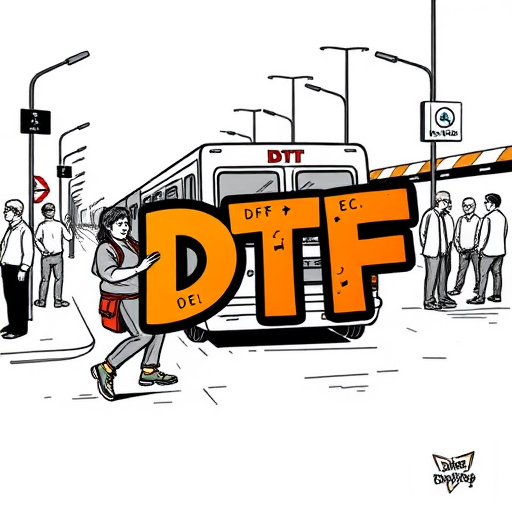
When it comes to achieving precise and detailed transfers, especially for intricate designs with thin lines, selecting the appropriate materials is paramount. In the world of DTF (Direct to Film) transfers, a variety of options are available, each offering unique advantages. The key lies in understanding your project’s requirements.
For optimal results, consider using high-quality film transfer media designed specifically for fine line reproduction. These materials often feature advanced coatings and backings that ensure crispness and accuracy during the transfer process. Additionally, choosing a suitable adhesive that provides strong bond strength while maintaining flexibility is essential to prevent damage to delicate details during application. The right combination of film and adhesive can make all the difference in achieving a vibrant, precise, and long-lasting transfer.
Techniques to Ensure Accurate Detail Transfer

To ensure accurate detail transfer in DTF (Direct To Film) transfers, several techniques come into play. First, high-resolution scanners with exceptional optical quality are essential. These machines capture intricate details and lines with remarkable precision, minimizing the risk of distortion or blurring. The use of specialized film and ink combinations tailored for detailed work further enhances accuracy by allowing for a broader range of line weights and shades.
Additionally, pre-press preparation plays a vital role. This includes cleaning and preparing the original artwork to remove any contaminants that might affect the scan quality. Vectorizing the design before transfer can also improve accuracy, converting the image into editable paths that maintain sharp lines and angles. Proper calibration of the scanning equipment ensures consistent results across different parts of the artwork, guaranteeing that every detail is accurately reproduced on the final medium.
Real-World Applications and Benefits of DTF Transfers

In various industries, the DTF Transfer has become an indispensable tool for achieving precise and intricate designs. From the graphic arts to manufacturing, this technology allows for the accurate reproduction of thin lines and detailed patterns, opening up a world of creative possibilities. In the realm of printing, for instance, DTF Transfers enable the creation of high-resolution artwork on a variety of surfaces, from textiles to metal, ensuring every delicate detail is captured flawlessly.
This method offers numerous benefits, including enhanced efficiency, improved accuracy, and increased versatility. By automating the transfer process, businesses can save time and reduce human error. Furthermore, DTF Transfers enable the customization of products at scale, catering to the growing demand for personalized items. In today’s competitive market, this technology provides a significant advantage, allowing companies to deliver exceptional quality while meeting diverse customer requirements.








